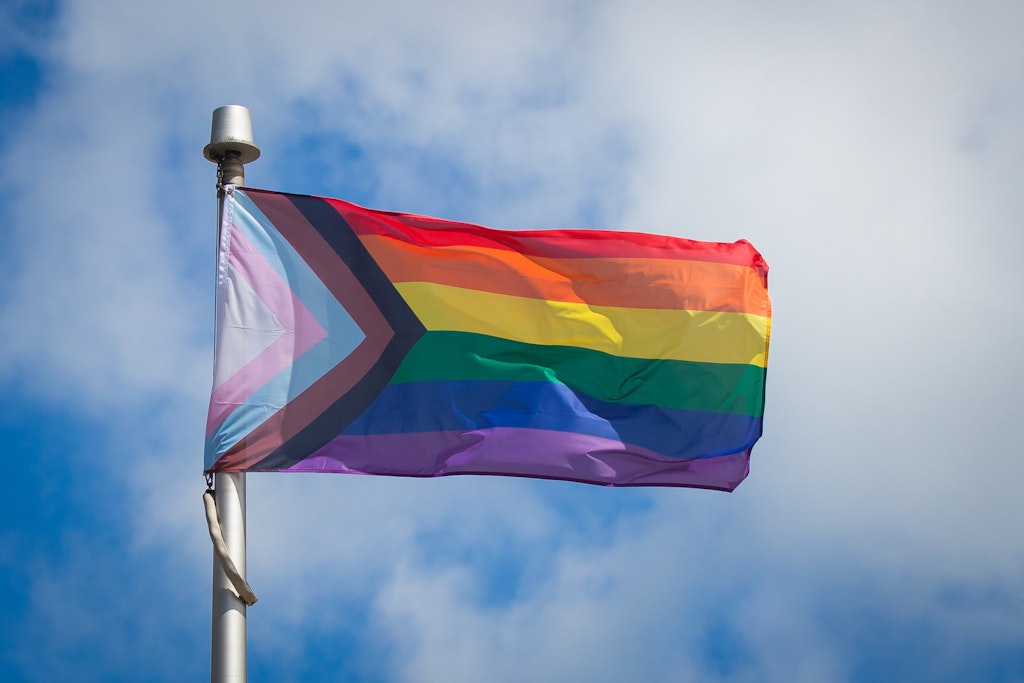The Unnatural Herstory Museum
There is no real reason for museums to segregate what was hers and his
This article is taken from the February 2022 issue of The Critic. To get the full magazine why not subscribe? Right now we’re offering five issue for just £10.
Plans are afoot to build an “American Women’s History Museum” in Washington DC. The Smithsonian is masterminding the project, and a council of advisers — among them Billie Jean King and Craigslist founder Craig Newmark — has already been established. It will be another ten years or more before the doors to the building open, but the Smithsonian has given a taste of what is to come through a preliminary American Women’s History Initiative, which can be explored online.
Scrolling through, it all looks very exciting. There are sections showcasing objects from the worlds of female education, activism, sport, culture and science — things such as Helen Keller’s watch, the clothes worn by one of the Little Rock Nine in Arkansas in 1957 (both below), and the first maternity uniform for pregnant pilots. There are also plenty of intriguing pages dedicated to needlework created by women in the nineteenth century. Ellen Harding Baker’s didactic quilt illustrating the solar system — including two moons of Mars first detected in her lifetime — is anything but dull. 
But something about the project rankles. Leaving aside the rhetoric — the vocabulary of “empowerment”, “amplification” and, worst of all, “herstory” grates on this British classicist — is it not counterintuitive to be curating collections by gender, especially in the current climate, when doing so risks framing everything that’s ever been made or done by a woman as part of this alternative herstory, as opposed to just, well, history?
The Smithsonian American Women’s History Museum will not be the first female-centric museum to appear in the States. Washington already has a National Museum of Women in the Arts. The US capital will certainly be well-stocked with women’s stories by the mid-2030s. There are also several women’s museums in Europe, including the Museum of Women’s History in Umeå in Sweden, the Museo della Donne in Merano, Italy, and Haus der FrauenGeschichte in Bonn.
We are yet to establish a national museum dedicated to the roles of women in British history, but we can boast a Vagina Museum in London’s Camden (at least for the time being; though it is currently closed due to a lack of funding).
The historical record is simply incomplete for as long as half the population is absent
There is no question that museums like these serve a valuable cultural purpose. Too many women have been written out of the historical narratives to which they belong. Their omission is sometimes wilful, sometimes not. An ancient historian like Thucydides didn’t have much scope to incorporate a lot of detail about women’s lives into his account of the Peloponnesian War given that his focus was on a world from which they were largely excluded.
Even where women have been missed out incidentally, however, there are often surviving clues to their whereabouts that make it possible for us to write them back into the story. Historians who hope to provide a well-rounded portrait of an era today should really be doing all they can to recover those lost lives. The same is true for museum curators. The historical record is simply incomplete for as long as half the population is absent.
The difficulty comes when women’s stories are revived and detached in such a way that we forget that they originally formed part of the same tapestry as the men’s. When they’re explicitly and exuberantly hailed as “women’s stories” and “women’s histories” there’s a danger that they will immediately be relegated to the shadowy corner from which they came on the grounds that they’re part of some faddish, tokenistic effort to redress the balance in cultural representation. I couldn’t be more conscious of this as I am in the process of writing a women-led history myself. Drawing attention to historical women can feel revisionist even when it’s not.
“A trip to the women’s museum” is the sort of thing you can imagine beleaguered dads imposing on their kids at weekends, or stag-night lads arranging as a prank for the morning after the party. You can almost hear the groans of a 12-year-old boy forced to visit such a place on a school trip.
However engaging the displays, the notion of a museum dedicated to women alone seems unlikely to inspire much enthusiasm in those who might benefit most from seeing them. I’m not saying that lots of men wouldn’t visit and take a genuine interest, only that the true value of what’s being presented through a women’s museum may easily be underestimated. 
There needs to be a change in the way that women’s history is presented
What are the alternatives? Women could certainly be made more visible in existing museum collections. Work is already being done to reshuffle displays and bring more objects from Africa, for example, out of storage at the British Museum. I’ve rummaged through enough archival boxes to know that there are plenty of female artefacts that could also be brought out. Doing so shouldn’t mean relegating men’s things to the basement, but rather integrating them with the rest to give a more complete view of the past. Many historic societies were heavily segregated by gender, but the experiences of their women and men were far from discrete. There is no real reason to go on segregating what was hers and his.
Coined by American feminists in 1970 to describe history written from a female perspective, “herstory” could flourish very well without the term. The ancient Greek origin of “history”, historia, meant simply “enquiry” or “knowledge attained through research”. The word was neutral where the subject itself was concerned, embracing the affairs of women as well as men and, besides, feminine in its noun form. One of the most prominent historians to use it, Herodotus, was unusual for a writer of the fifth century BC in bringing numerous women to the fore of his account of the Graeco-Persian Wars. His-story was also hers.
Museums stand at the vanguard of public engagement with the past. It is therefore essential that they capture the spirit of the cultures they represent. Many existing collections are too male-centric, partly because they adhere to the patterns of the surviving written records. Since wall space is limited, and display cases only so big, there is certainly an argument for allocating a special place to objects that have been overlooked, particularly if they illuminate the lives of people neglected in literary sources. But for a dedicated women’s history museum to succeed in the long-term, there needs to be a change in the way that women’s history is presented.
The current vogue for championing female stories as something separate from the complete picture risks alienating the broader public and coming across as some worthy alternative to “proper history”. Men need to remain part of the narrative, as they always have been, if the works of women are wholly to be understood. Herstory by stealth needn’t entail any diminishment of pride in women’s achievements. Women of the past have lurked between the lines for thousands of years. It is now time to resurrect and celebrate them within the context of the world from which they came.
Enjoying The Critic online? It's even better in print
Try five issues of Britain’s most civilised magazine for £10
Subscribe














